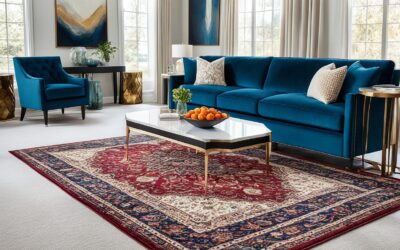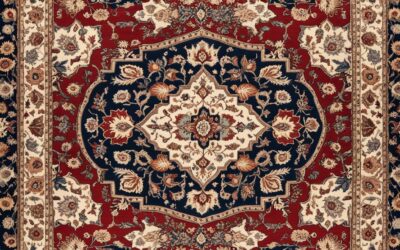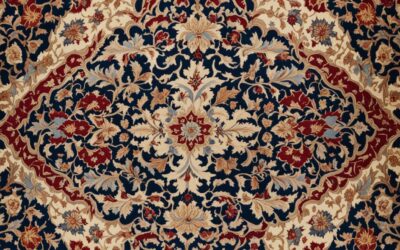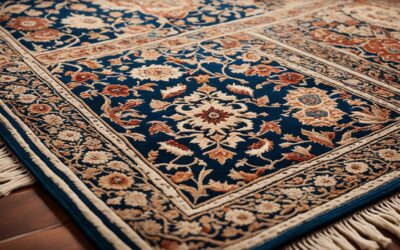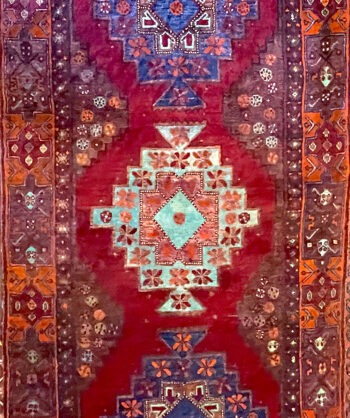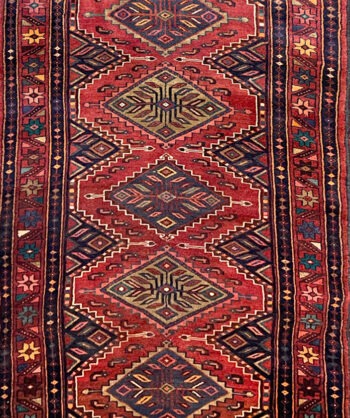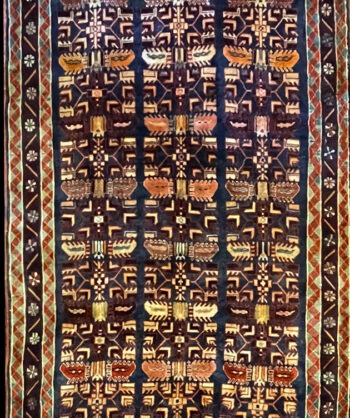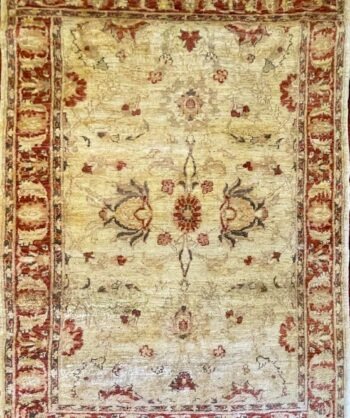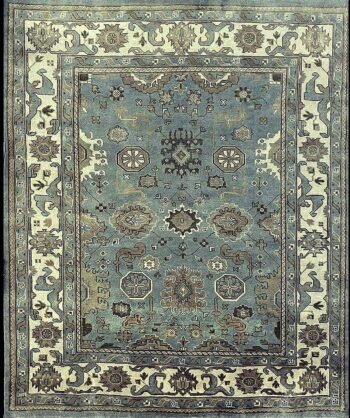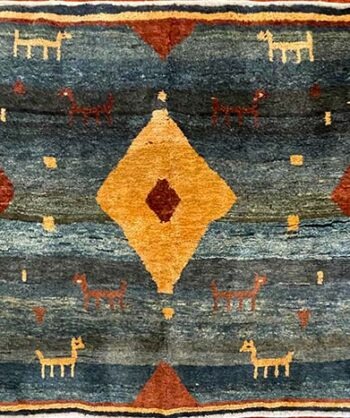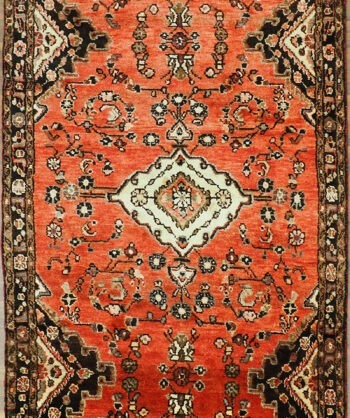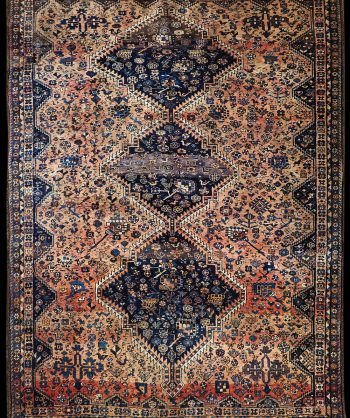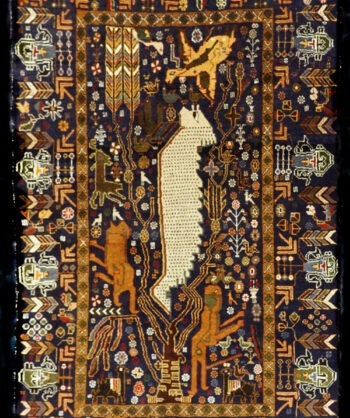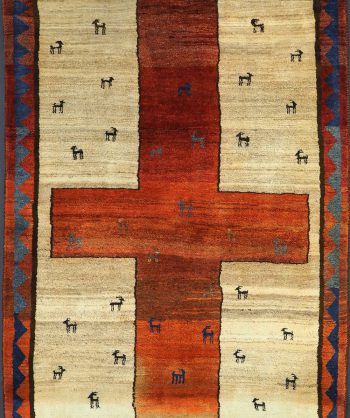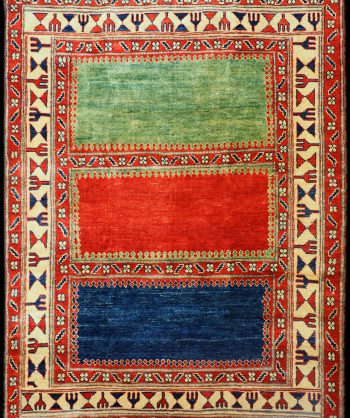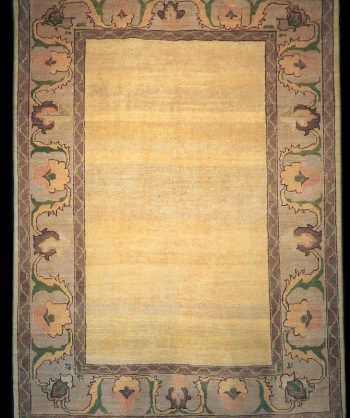Table of Contents
Rug weaving is more than just an art. It shows Iran’s vibrant culture and strength. For over 2,500 years, rug weaving has been a key part of Iranian culture. Persian rugs mix art and stories, acting as symbols of Iranian life.
This article will look into the art and meaning of Persian rugs. We’ll cover their history, how they’re made, and their importance in culture.
Key Takeaways
- Discover the rich history and cultural significance of Persian rug weaving, a craft that dates back over 2,500 years.
- Explore the intricate patterns, traditional weaving techniques, and use of natural dyes that make Persian rugs true works of art.
- Understand the role of Persian rugs in Iranian social and cultural life, as they serve as cherished cultural emblems.
- Learn about the evolution of Persian rug designs and the influence of key figures, such as kings and leaders, on the craft.
- Gain insight into the unique characteristics and influence of Ottoman rugs on the Persian rug-weaving tradition.
Origins of Persian Rug Weaving
The ancient Persians were leaders in the art of rug weaving. They started in the 5th century BCE. They used a new loom that changed weaving. This loom let them use wool, cotton, and silk to make beautiful rugs.
Early Examples of Persian Rugs
The Pazyryk Carpet is one of the oldest and most famous Persian rugs. It was found in Siberia and is from the 5th century BCE. It shows the skill of ancient Persia in rug weaving techniques.
Another famous rug is the Ardabil Carpet from the 16th century. It’s from the Safavid Dynasty and is a top example of Persian rug art.
Significance of Rug Weaving in Ancient Persia
Rug weaving was very important in ancient Persia. It was used for warmth and as a symbol of status. Persian rugs showed the culture and skill of the area.
“The Persian rug is not just a floor covering, but a work of art that reflects the rich cultural heritage and artistic mastery of ancient Persia.”
The Safavid Dynasty and the Golden Age of Persian Rugs
The Safavid Dynasty (1501-1736) was a golden time for Persian rug weaving. Shah Abbas I brought together skilled artisans from all over Persia. They worked in the royal workshops of Isfahan, making beautiful carpets for palaces, mosques, and the elite.
This era saw the rise of Kerman and Kashan as famous rug-making centers. They were known for their detailed floral patterns and amazing skill. Weavers in these places made carpets that reached the peak of Persian rug art.
These carpets were loved by the Safavid court and the aristocracy. They were highly valued.
Development of the Kerman and Kashan Rug-Making Centres
The Safavid period made Kerman and Kashan famous for their rugs. They were known for their intricate floral patterns and great craftsmanship. Skilled weavers in these places made carpets that were masterpieces.
These carpets were sought after by the Safavid court. They became treasures among the aristocracy.
Iconic Rugs from the Safavid Era: Ardabil Carpet and the Sheikh Safi Carpet
The Ardabil Carpet and the Sheikh Safi Carpet are famous from the Safavid era. Shah Tahmasp commissioned them. The Ardabil Carpet is at the Victoria and Albert Museum in London. It’s a masterpiece with intricate design and bright colors.
The Sheikh Safi Carpet, also called the “smaller Ardabil,” is just as beautiful. It has the same grandeur and artistic skill as the Ardabil Carpet.
“The Safavid era marked the golden age of Persian rug weaving, with the establishment of royal workshops in Isfahan and the development of renowned rug-making centers in Kerman and Kashan.”
| Rug | Characteristics | Significance |
|---|---|---|
| Ardabil Carpet | Intricate design, vibrant colors | Masterpiece of Persian rug-making |
| Sheikh Safi Carpet | Shares grandeur and artistic excellence of Ardabil Carpet | Also known as the “smaller Ardabil” |
The Art of Persian Rug Weaving
Persian rug weaving is a craft that goes back centuries. It’s known for its beauty and deep cultural meaning. The rugs are made with the finest materials like wool, cotton, or silk. These are dyed with natural and mineral colors.
Cultural Symbolism in Rug Designs
The patterns in Persian rugs are full of cultural and religious meaning. They show the weaver’s beliefs and feelings. They also show the world around them.
For example, the flowers in the rugs stand for nature’s beauty. The geometric shapes show the balance of the universe. Each part of the rug has its own story.
- The tree of life motif, for instance, is believed to represent the connection between the earthly and spiritual realms.
- The iconic Pazyryk Carpet, one of the oldest surviving Persian rugs, features a stunning array of mythical creatures and symbols that were deeply meaningful to the ancient Persians.
The Role of Rugs in Iranian Social and Cultural Life
Persian rugs are more than just beautiful. They are important in Iranian life. They are found in mosques, palaces, homes, and tents. They are both useful and decorative.
Having a Persian rug in a room shows hospitality, wealth, and culture. It’s a sign of respect and elegance.
“A Persian rug is not just a piece of art – it’s a physical manifestation of the rich cultural heritage and spiritual beliefs of the Iranian people.”
Persian rugs are highly valued around the world. They are seen as a key part of Iranian culture.
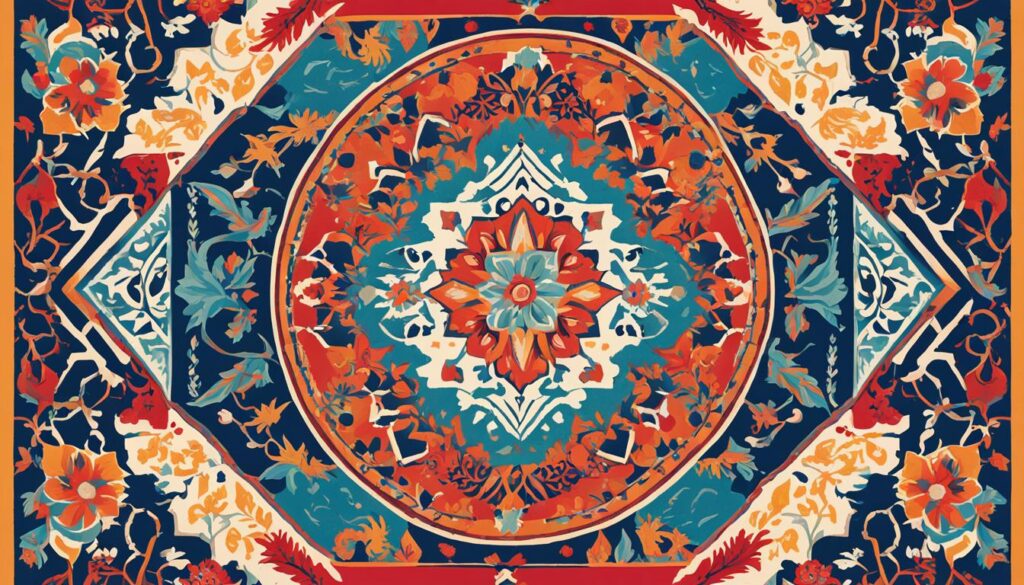
Art of Persian Rug Weaving: Patronage and Evolution
The art of Persian rug weaving has been deeply influenced by kings and leaders. They have supported it throughout history. Persian royalty, like Shah Abbas I, and leaders from Germany, changed the look of Persian rugs.
Kings and Leaders Who Influenced Rug Weaving
Shah Abbas I, a famous Safavid ruler, set up royal workshops in Isfahan. He hired skilled artisans to make carpets for the elite. This support led to new design ideas and the “Vase technique”.
German industrialists and scholars also helped popularize Persian rugs in Europe. They included Wilhelm von Bode and Friedrich Sarre. This had a big impact on rug designs.
Impact of Their Patronage on the Evolution of Rug Designs
- The Safavid dynasty’s support helped create the famous Kerman and Kashan rug-making centers. They are known for their detailed patterns and great craftsmanship.
- Adapting traditional and modern designs for European tastes helped the evolution of rug designs.
- The Ardabil Carpet and the Sheikh Safi Carpet are iconic examples from the Safavid era. They show the amazing art made possible by royal support.
Kings, leaders, and important people have been key in shaping the Patronage of Persian Rug Weaving, Influence of Kings and Leaders, and the Evolution of Persian Rug Designs over time.
“The support of Persian royalty and European scholars changed Persian rug designs. They brought in new techniques and inspired new creative paths.”
The Ottoman Empire’s Influence on Rug Weaving
The Ottoman Empire stretched across three continents from the 14th to the early 20th century. It left a big mark on rug weaving. They took in many cultures as they grew, creating a unique rug-making tradition.
This can be seen in the special features of Ottoman rugs.
Unique Characteristics of Ottoman Rugs
Ottoman rugs mix geometric and curvy designs. They often have motifs like medallions, stars, and detailed flowers. The colors are bright and bold, with lots of reds, blues, and yellows.
These rugs are made with the Turkish knot, which is different from the Persian knot in Persian rugs.
The Ottoman Empire’s impact on rug weaving and the unique characteristics of Ottoman rugs have made these rugs very popular. They are loved by collectors and experts all over the world. The mix of different cultures and the skill of Ottoman weavers has kept this tradition alive.
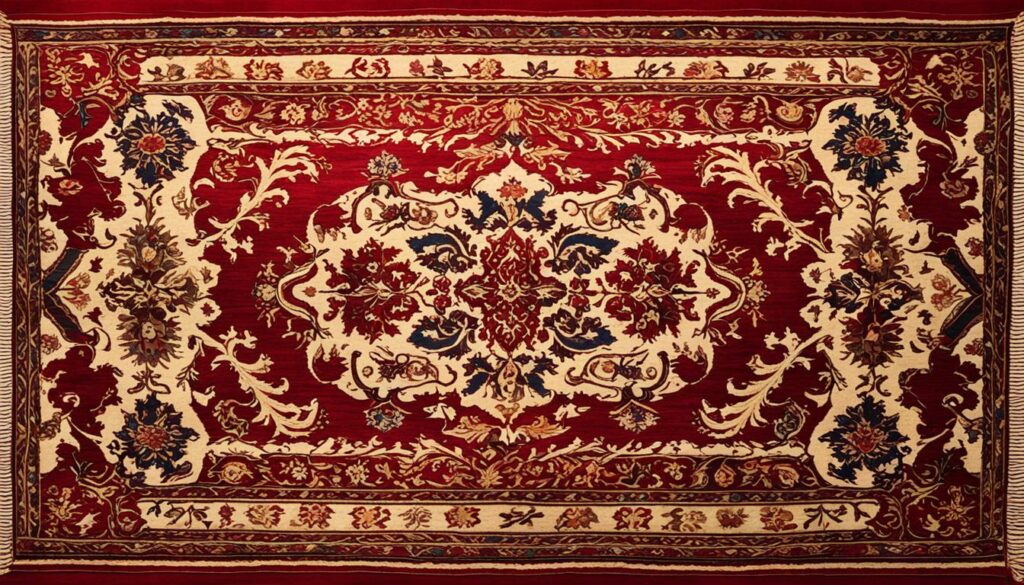
“The Ottoman rugs are a testament to the power of cultural exchange and the enduring beauty of traditional craftsmanship.”
Conclusion
Persian rug weaving is a beautiful part of Iran’s culture and art. It shows the skill and creativity of Iranian artists over the ages. From ancient times to the Safavid Dynasty and the Ottoman Empire’s influence, Persian rugs have evolved.
These rugs are known for their detailed designs and bright colors. They carry deep cultural meanings. They show the world the beauty of Iran’s art.
The art of Persian rug weaving is a key part of Iranian life. It will keep inspiring people for many years. This tradition is celebrated around the world for its cultural value, skill, and beauty.
As we end our look at Persian rug weaving, we value Iran’s culture more. We see the lasting impact of this art. It’s a mix of culture, skill, and beauty that touches everyone.
FAQ
What is the significance of Persian rug weaving in Iranian culture?
Persian rug weaving shows Iran’s vibrant culture and strength. It has a history of over 2,500 years. These rugs mix art and stories, acting as symbols of Iranian life.
What are some of the earliest examples of Persian rugs?
The Pazyryk Carpet from the 5th century BCE and the Ardabil Carpet from the 16th-century Safavid Dynasty are early Persian rugs. They highlight the ancient Persians’ skill in weaving intricate patterns and using vibrant colors.
How did the Safavid Dynasty influence the golden age of Persian rug weaving?
Under the Safavid dynasty (1501-1736), Persian rug weaving reached its peak. Shah Abbas I was key in boosting the industry. He set up workshops in Isfahan, where skilled artisans made carpets for the elite, creating the Kerman and Kashan rug-making centers.
What is the cultural and symbolic significance of the designs and motifs in Persian rugs?
Persian rugs’ designs and motifs are full of cultural and religious meaning. They show the weaver’s beliefs and feelings. These rugs are important in Iranian life, used in mosques, palaces, homes, and by nomadic tribes.
How did the patronage of Persian royalty and foreign leaders influence the evolution of rug designs?
Persian royalty and foreign leaders, especially from Germany, changed Persian rug designs. Their support brought new design ideas and patterns. This led to the “Vase technique” by Shah Abbas and adapting traditional designs for European tastes.
How did the Ottoman Empire’s influence impact the rug-making tradition?
The Ottoman Empire’s growth changed rug production and trade. It led to a unique rug-making heritage. Ottoman rugs have their own look, with geometric and curvilinear designs and special motifs. They use the Turkish knot, unlike Persian rugs’ Senneh knot.


